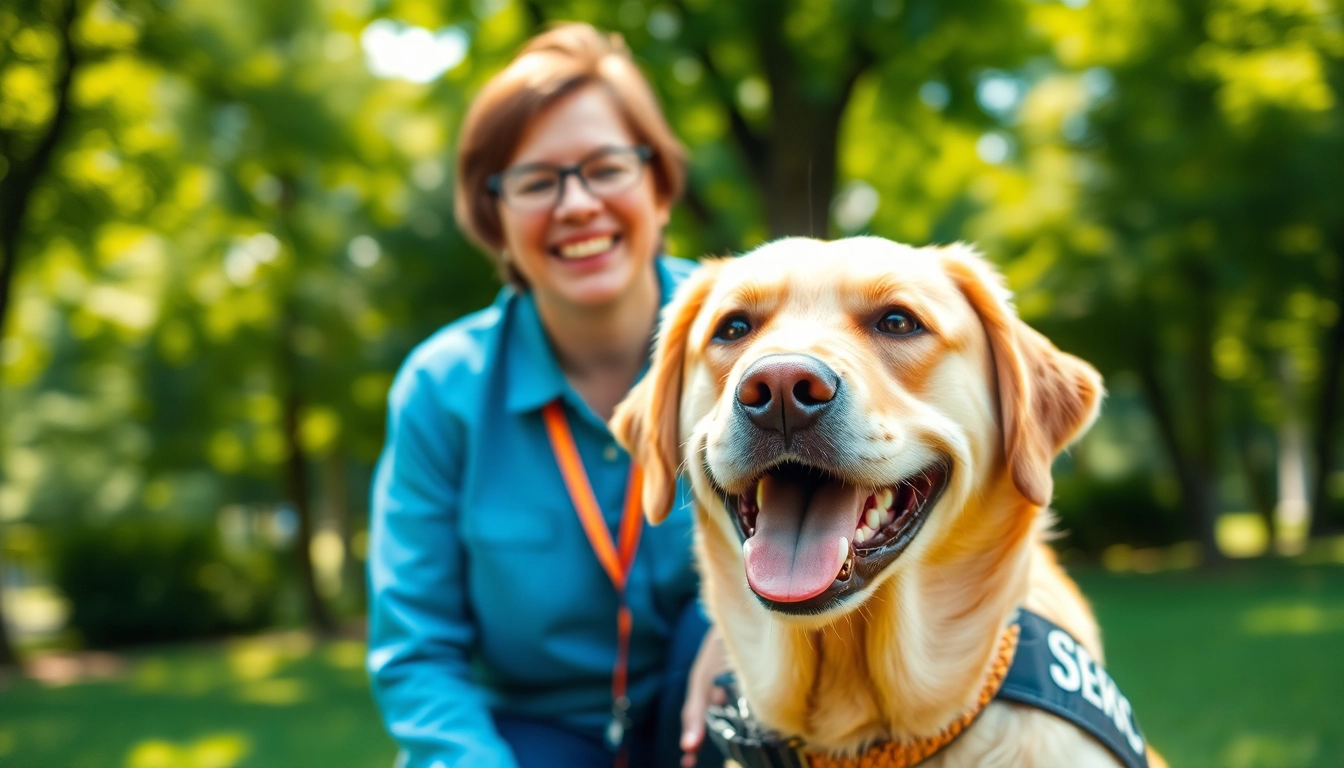Understanding the Need to Buy a Service Dog
Service dogs provide invaluable support to individuals with disabilities, enhancing their quality of life in ways that would otherwise be challenging. These specially trained animals assist with a range of tasks, offering physical, emotional, and psychological support. For those considering a companion that can make a tangible difference in their daily lives, taking the step to buy a service dog is something to thoughtfully explore.
Benefits of Having a Service Dog
Service dogs offer numerous benefits to their handlers. They can help improve independence, provide companionship, and assist with specific tasks necessary for living a fulfilling life. For example, service dogs can help guide individuals with vision impairments, retrieve items for those with limited mobility, and alert individuals with hearing impairments to noises like alarms and doorbells. Beyond these practical applications, service dogs can also ease anxiety and depression, providing emotional comfort and connection.
Identifying Your Specific Needs
Before making the decision to buy a service dog, it’s essential to identify your specific needs. This involves assessing your disability and understanding how a service dog can accommodate your lifestyle. For instance, someone with a mobility impairment might require a dog trained to assist with balance and fetching dropped items, whereas someone dealing with PTSD may benefit more from a dog trained for anxiety relief and providing comfort during episodes of distress. An honest evaluation of what you need from a service dog will pave the way for a more suitable match.
How Service Dogs Assist with Disabilities
Service dogs are trained to perform specific tasks that help alleviate the challenges related to their handler’s disabilities. For physical disabilities, this could range from opening doors and fetching items to providing balance support. For mental health conditions, service dogs might be trained to recognize signs of anxiety or panic attacks and provide comfort or retrieve medication. Understanding these functions allows future owners to better communicate their requirements when looking to purchase a service dog.
Factors to Consider Before You Buy a Service Dog
Cost Implications of Buying a Service Dog
Investing in a service dog can be costly. Prices can vary significantly based on the dog’s breed, age, training level, and the organization or breeder you work with. Typical costs may range from a few thousand dollars to upwards of $25,000, considering the extensive training these dogs undergo. Additionally, prospective dog owners should factor in ongoing costs for food, veterinary care, licensing, and insurance. A clear understanding of the financial commitment is crucial before deciding to buy a service dog.
Finding Reputable Breeders and Trainers
Once you’ve established your needs and budget, the next step is to find a reputable source for your service dog. You will want to find breeders or training organizations that specialize in service dogs, particularly those that are accredited by recognized authorities. It is advisable to visit the facility, meet the trainers, and interact with the dogs to assess their training methods and care quality. Recommendations and reviews from past clients can also provide valuable insights into the reliability and reputation of these providers.
Evaluating the Dog’s Training and Suitability
Not every dog is suited to be a service dog. The temperament, energy level, and health of the dog are critical factors to evaluate. A suitable service dog should be calm, trained in basic commands, and able to focus on tasks amidst distractions. It’s vital to observe potential candidates in different environments, particularly those that mimic daily routines your service dog will encounter. Evaluation also includes ensuring the dog has been appropriately socialized to handle various situations, people, and noises.
The Process to Buy a Service Dog
Steps to Apply for a Service Dog
The process of acquiring a service dog can be as involved as it is significant. Initially, applicants may be required to fill out an application detailing their disability and specific needs. This may be followed by interviews or evaluations with service dog trainers to ascertain suitability. Some organizations may have a waiting list, requiring patience and engagement throughout the process. It’s essential to be thorough, honest, and prompt during your application to foster a favorable outcome.
Paperwork and Legal Considerations
When seeking to buy a service dog, being aware of legal considerations is crucial. In the United States, the Americans with Disabilities Act (ADA) governs the use of service dogs and outlines their rights and duties in public spaces. Understanding these regulations around service animals is essential for both potential handlers and the professionals they work with. Additionally, proper licensing and identification for your service dog may be necessary, depending on your local laws.
Understanding Waiting Lists and Availability
Many reputable organizations that train service dogs have waiting lists due to the high demand and the time-intensive nature of training. It’s important to manage expectations regarding how long the process may take. In addition to an initial application, waiting for a suitable dog to be ready for placement can vary based on individual circumstances and organization resources. This understanding allows potential owners to plan accordingly while awaiting their service dog.
Training and Socialization for Your Service Dog
Basic Training Techniques for Service Dogs
Training a service dog involves a variety of techniques to ensure they respond effectively to their handler’s needs. Basic obedience training is imperative, with commands such as sit, stay, heel, and come forming the foundation. From there, service dogs typically undergo specialized training based on their handler’s specific requirements. Utilizing positive reinforcement methods can significantly enhance the learning experience for the dog, helping them master complex tasks essential for their service role.
Ongoing Training and Handler Responsibilities
Even after completing formal training, ongoing practice is essential for both the dog and handler’s success. Handlers are responsible for maintaining their dog’s skills through regular training sessions, social outings, and reinforcement of learned tasks. This continuous interaction not only preserves the dog’s abilities but fosters a close bond between handler and animal. Handlers should also take time to learn as much as possible about their own role in managing and understanding their dog, which will lead to a smooth cohabitation experience.
Socialization Skills for Service Dogs in Public
Service dogs must be well socialized to navigate various public environments without becoming anxious or distracted. Exposing them to different settings, such as crowded areas, public transportation, and social gatherings, prepares them for real-world scenarios. Teaching the dog to remain calm and focused amidst these distractions is crucial for successful public outings. Engaging with other dogs and humans in a controlled manner helps them develop critical social skills that are invaluable once they begin accompanying their handler regularly.
Common Misconceptions About Buying a Service Dog
Debunking Myths Surrounding Service Dogs
Several misconceptions about service dogs can cloud the decision-making process for prospective owners. A prevalent myth is that any dog can be trained as a service dog; in reality, not all dogs possess the temperament or ability to perform the required tasks. Furthermore, some may mistakenly believe that service dogs are merely pets with special privileges; however, they are trained to perform specific functions that assist their handlers in living with disabilities.
The Reality of Service Dog Ownership
Owning a service dog is a significant responsibility that goes beyond companionship. Handlers must commit to ongoing training and socialization, ensuring their dog remains a well-functioning service animal. This level of care requires a time and energy investment, paired with the understanding that service dogs work to assist in managing their handler’s disability rather than simply acting as a pet. Owning a service dog can be rewarding, yet it involves embracing the challenges that come with this honorable role.
Resource Networks for Service Dog Owners
Support networks and resources exist to help service dog owners navigate challenges and connect with others in similar situations. Online forums, local support groups, and training organizations can offer guidance, shared experiences, and emotional support for individuals and their service dogs. Engaging with these communities can enhance the experience and education of service dog ownership, ensuring that handlers have access to valuable information and support throughout their journey.



